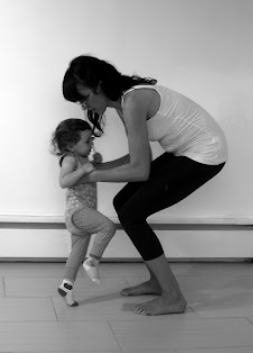The Importance Of Movement Patterns In Solving Joint Pain
Movement patterns are easily the most overlooked and neglected cause of chronic joint pain in adults as they get older. When is comes to solving joint pain, how you move is just as important as how much you move. And moving too much without attention to form places a lot of impact on your joints which, over time, leads to chronic joint pain.
The only way to solve chronic joint pain is to learn how to limit the impact that goes through your joints as you move through your day. Learning, understanding, and practicing basic movement patterns is THE BEST way to limit impact on your joints and the build strength and confidence to live active, healthy, and happy lives. In this article we'll aim to give you a better understanding of movement patterns and how they can be used to solve pain.
What Are Movement Patterns?
Movement patterns are defined as how we coordinate movements to perform basic tasks. The hinge, the lift, the squat, the lunge, and the push/pull/press of the upper body are all examples of movement patterns. In the real world this equates to how you reach forward, how you lift something from the ground, how you sit down or climb stairs.
While seemingly simple movements, as we get older we can lose this coordination. Improper coordination of these movements, over time, leads to joint pain which we will discuss in more detail in the next section.
The Hinge Pattern
The Lift Pattern
Using Movement Patterns To Solve Joint Pain
The body has an amazing ability to heal itself. However, it's unrealistic to expect the body to make a full recovery if we immediately go back to hammering our joints. Similar to picking a scab, each time we repeat the irritating activity we start the healing process all over again.
This is the cycle that most adults who deal with joint pain find themselves in. They're in pain, they rest, they feel better, they go back to their normal routine, and the pain comes back years, months, even days later. Improving movement patterns helps break the cycle in the following ways:
1. Shift Loads To Larger, Weight Bearing Joints
Certain joints are made to handle heavier loads than others. Our hip joints, for example, are big strong weight bearing joints that can take a lot of impact. On the other hand, our knees and lower back are much smaller joints not designed to handle heavy loads. Improving movement patterns ensures that the impact of our daily activities, exercise routine, and other recreational activities is handled by our bigger stronger joints.
Example of how a small change to our movement can shift load to the smaller joints of our lower back
2. Properly Engage Muscles To Take Pressure Off Joints
Our body has two primary ways of supporting itself. Our muscles provide dyanamic stabilization to take pressure off our joints. Ligaments, cartilage and joints provide passive stability when our muscles fail. Overrelying on passive stabilizers will eventually lead to pain and injury. Practicing movement patterns helps engage larger muscle groups to initiate movement which takes pressure off our joints to avoid pain.
Hamstrings engaged. A lift from here is handled by our strong glute and hamstring msls.
Hamstrings not engaged. A lift from here goes through joints of our low back.
3. Protects Joints Through The Day
Most injuries occur during the course of our normal, daily routine. Doing dishes, lifting our kids or grandkids, and picking things off the floor are all potentially dangerous if we don't pay attention to how we're moving. Bringing awareness to our movement patterns ensures that we move in an optimal way to help limit the impact that goes through our joints as we move throughout our day.
Good lifting pattern to protect lower back
Poor liffting pattern which will contribute to back pain
4. Build Strength Without Stressing Joints
Getting stronger is one of the most important things you can do to solve joint pain and improve your overall health. The basic movement patterns (hinge, lift, squat, etc) are also the foundation for most strengthening exercises. Building a solid movement foundation will ensure that your able to build strength WITHOUT stressing your joints. And the stronger you get, the less force will through your joints, the less pain you experience. And that's how a new, healthier cycle begins.
Build Foundation
Add Resistance
Build Strength
Learning, practicing, and understanding movement patterns is just one of many ways to limit the impact that goes through our joints to solve chronic pain. For a more complete understanding and answers, be sure to download our free program ‘Solving Pain With Strength’.










